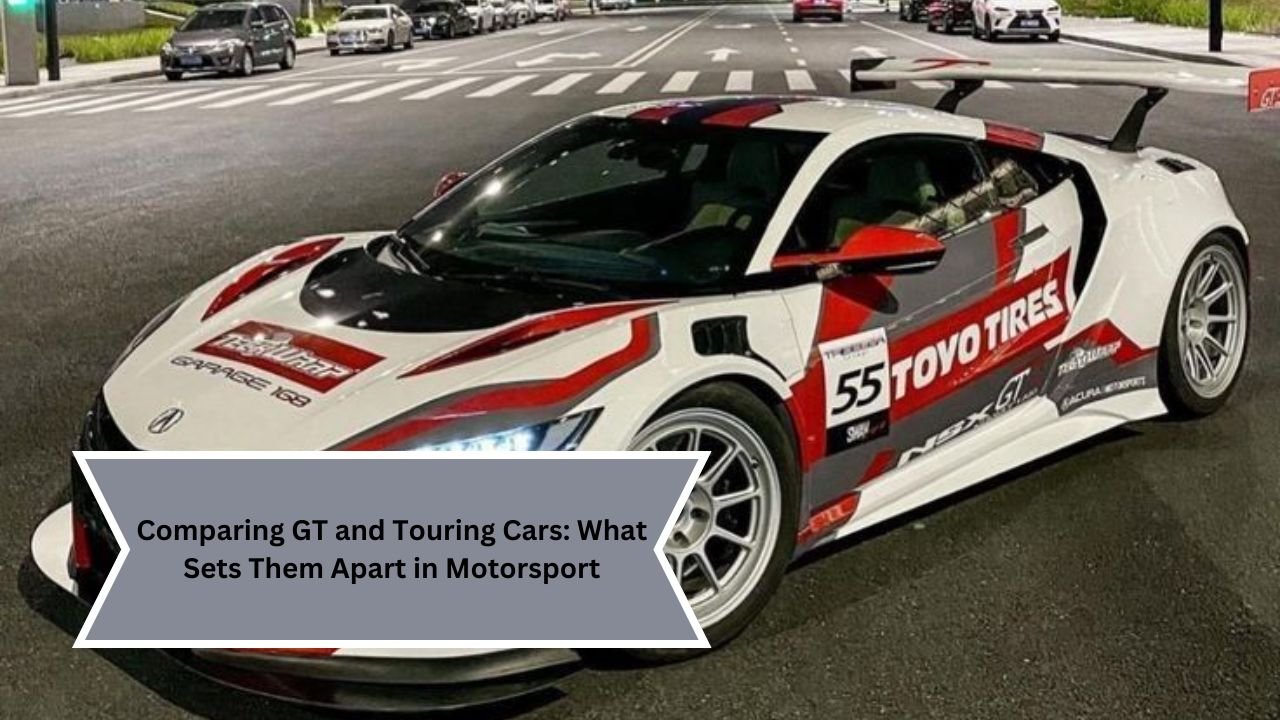In the dynamic world of motorsport, different categories of vehicles compete under various regulations and standards. Among these categories, GT (Grand Touring) cars and Touring cars hold significant prestige and excitement. While both types of vehicles share a passion for racing, they have distinct characteristics, performance capabilities, and purposes. This article explores the key differences between GT and Touring cars, highlighting what sets them apart in the thrilling arena of motorsport.
Understanding GT Cars
Definition and Purpose
GT cars are designed for high-performance racing and are often based on road-going sports cars. These vehicles are characterized by their emphasis on speed, power, and aerodynamic efficiency. Typically, they feature advanced technology and are constructed to withstand the rigors of competitive racing while still maintaining a degree of road legality.
Design and Specifications
GT cars are often defined by their sleek, aerodynamic designs, with a focus on reducing drag and improving downforce. Common specifications include:
- Engine: GT cars are usually equipped with powerful engines, often ranging from 4 to 8 cylinders, with turbocharged or naturally aspirated options. They are designed to deliver high horsepower and torque.
- Weight: These vehicles typically have a lightweight construction using materials such as carbon fiber, aluminum, and advanced composites to enhance performance and handling.
- Aerodynamics: GT cars feature large spoilers, splitters, and diffusers that improve aerodynamic efficiency, allowing them to achieve higher speeds on the racetrack.
Popular GT Championships
Several prestigious championships showcase GT cars, including:
- FIA GT World Championship
- IMSA WeatherTech SportsCar Championship
- 24 Hours of Le Mans
These competitions feature a mix of professional and amateur drivers, often racing in teams to maximize performance and strategy.
Understanding Touring Cars
Definition and Purpose
Touring cars, in contrast, are typically based on production sedans and hatchbacks. They are designed to provide close racing action while maintaining a connection to the vehicles that consumers can purchase. The focus for touring cars is on racing closely and competitively, making them more accessible to a broader audience.
Design and Specifications
Touring cars are characterized by their robustness and emphasis on competition rather than outright speed. Their specifications often include:
- Engine: Touring cars typically utilize production-based engines that are modified for racing. They usually feature four or six-cylinder configurations and focus on maintaining reliability and performance over endurance.
- Weight: These vehicles are heavier than GT cars due to stricter regulations regarding the use of stock parts and overall vehicle weight.
- Aerodynamics: While touring cars may incorporate aerodynamic enhancements, these modifications are generally less pronounced than those found on GT vehicles. The focus is on maintaining a balance between speed and control.
Popular Touring Car Championships
Touring cars have their own set of prestigious championships, such as:
- British Touring Car Championship (BTCC)
- World Touring Car Cup (WTCR)
- Supercars Championship (Australia)
These events are known for their thrilling races and intense competition, where drivers often race bumper-to-bumper.
Key Differences Between GT and Touring Cars
Performance and Speed
One of the most significant differences between GT and Touring cars is their performance. GT cars are engineered for maximum speed and agility, often achieving faster lap times than touring cars. This performance advantage stems from their powerful engines, lightweight construction, and advanced aerodynamics. In contrast, touring cars prioritize close racing and competitive dynamics, which can result in slower lap times but often lead to more exciting wheel-to-wheel action on the track.
Vehicle Design and Technology
GT cars are often equipped with cutting-edge technology that pushes the boundaries of automotive engineering. Features like adaptive suspension systems, advanced telemetry, and high-tech materials contribute to their performance capabilities. Touring cars, while still technologically advanced, are more aligned with production vehicles and tend to use parts that resemble those found in their road-going counterparts. This alignment means that touring cars often have a more practical design but may sacrifice some high-performance features for the sake of racing regulations.
Regulations and Classification
The regulations governing GT and Touring cars differ significantly, impacting their design and performance. GT racing typically has more lenient rules regarding modifications, allowing teams to push the limits of performance and innovation. This flexibility can lead to highly specialized machines that prioritize speed.
On the other hand, touring car regulations often enforce stricter guidelines, requiring teams to use production-based components and limiting modifications. These regulations ensure that the racing remains closely tied to the consumer market, enhancing the appeal of the sport to fans who drive similar vehicles.
Race Strategy and Tactics
The racing strategies employed in GT and Touring car competitions also differ due to their unique characteristics. GT races often involve strategies centered around tire management, fuel consumption, and the performance of individual drivers. Teams may opt for longer stints or make tactical decisions based on the car’s speed and handling capabilities.
In Touring car racing, the strategy often focuses on maximizing track position and exploiting opportunities for overtaking. The close nature of racing in this category often leads to incidents and collisions, requiring drivers to adapt their tactics rapidly. This makes touring car races highly unpredictable and thrilling for spectators.
Conclusion
While both GT and Touring cars are integral to the world of motorsport, they serve different purposes and offer unique experiences for drivers and fans alike. GT cars exemplify high performance, advanced engineering, and a commitment to speed, while touring cars prioritize close competition and a connection to the consumer market.
Understanding these distinctions allows enthusiasts to appreciate the diverse landscape of motorsport and the thrilling battles that unfold on racetracks worldwide. Whether you’re drawn to the sheer speed of GT racing or the nail-biting close finishes of Touring car events, both categories showcase the incredible skill and passion that define the world of competitive racing.

